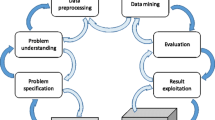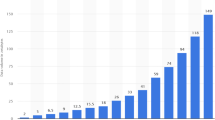Abstract
The rapid growth of Internet has vast amounts of information over online. The correct information can be provided by the source only if the information is processed, analyzed and linked. The efficient store and manage model is required to access and to protect these large data. These data are structured and unstructured which is available in online in order to process such data an intense technology is required. The cloud computing satisfies the need of store and manage model. Whereas to access and protect data, many intense technologies like parallel and map reduce methods are available. But these methods face difficulties in large data processing. In this article these traditional difficulties are overcome by Hadoop data model to give a high performance computing of large data in cloud computing environment. In the experiment, the proposed method was compared with previous works. As a result, the proposed method achieved 0.51 Packet delivery ratio with 0.71s Elapsed Time/Word transfer at the Receiver throughput of 770kbps, which is much better than that of previous work. The single cluster and analytical hierarchy process (AHP) is used to compute data along with Hadoop to provide fault tolerance over failures, less processing time and communication errors.









Similar content being viewed by others
References
Rao, B.T., Sridevi, N.V., Reddy, V.K., Reddy, L.S.S.: Performance issues of heterogeneous hadoop clusters in cloud computing. Glob. J. Comput. Sci. Technol. 11(8), 1–8 (2011)
Polato, I., R’eb, R., Goldmana, A., Kona, F.: A comprehensive view of hadoop research—a systematic literature review. J. Netw. Comput. Appl. 46, 1–25 (2014)
Qian, D.M., Zhang, Y.P., Dong, J.C., Wang, L.: Mapping knowledge domain analysis of medical informatics education. In: Li, S., et al. (eds.) Frontier and Future Development of Information Technology in Medicine and Education. Lecture Notes in Electrical Engineering, vol. 269, pp. 2209–2213. Springer, Dordrecht (2014)
Dua, R., Raja, A., Kakadia, D.: Virtualization vs containerization to support PAAS. In: IEEE International Conference on Cloud Engineering, pp. 610–614 (2014)
Gothai, E., Balasubramanie, P.: A novel approach for partitioning in hadoop using round robin technique. J. Theor. Appl. Inf. Technol. 63(2), 1–6 (2014)
Muhtaroglu, F.C.P., Demir, S., Obali, M., Girgin, C.: Business on big data applications. In: IEEE International Conference on Big Data, pp. 32–37 (2013)
Han, J., Ishii, M., Makino, H.: A hadoop performance model for multi-rack clusters. In: Proceedings of the 2013 5th International Conference on Computer Science and Information Technology (CSIT), pp. 265–274 (2013)
Faghri, F., Bazarbayev, S., Overholt, M., Farivar, R., Campbell R.H., Sanders, W.H.: Failure scenario as a service (FSaaS) for Hadoop clusters. In: Proceedings of the Workshop on Secure and Dependable Middleware for Cloud Monitoring and Management ACM, Beijing, China, Oct. 1–11, pp. 5 (2013)
Garcia-Robledo, A., Diaz-Perez, A., Morales-Luna, G.: Correlation analysis of complex network metrics on the topology of the internet Emerging Technologies for a Smarter World. In: 10th International Conference and Expo, pp. 1–6 (2013)
Benslimane, Z., Liu, Q., Hongming, Z.: Predicting Hadoop parameters. In: Proceedings of the Second International Conference on Advances in Electronics and Electrical Engineering Seek digital library, pp. 63–67 (2013)
Gao, S., Li, L., Li, W., Janowicz, K., Zhang, Y.: Constructing gazetteers from volunteered big geo-data based on Hadoop. Comput. Environ. Urban Syst. 61, 172–186 (2017)
Barga, R.S., Ekanayake, J., Lu, W.: Project daytona: data analytics as a cloud service. In: Proceedings of the International Conference of Data Engineering, IEEE Computer Society, pp. 1317–1320 (2012)
Banyal, R., Jain, P., Jain, V.: Multi-factor authentication framework for cloud computing. In: Fifth International Conference on Computational Intelligence, Modelling and Simulation, pp. 105–110 (2013)
Zhang, Z., Xiao, L., Li, Y., Ruan, L.: A VM-based resource management method using statistics. In: Proceedings of the IEEE 18th International Conference on Parallel and Distributed Systems, pp. 788–798 (2012)
Jimborean, I., Groza, A.: Ranking ontologies in the ontology building competition boc 2014. In: IEEE 10th International Conference on Intelligent Computer Communication and Processing (ICCP2014), Cluj-Napoca, Romania, IEEE, pp. 75–82 (2014)
Rahmani, A., Amine, A., Mohamed, R.H.: A multilayer evolutionary homomorphic encryption approach for privacy preserving over big data. In: Proceedings of International Conference on Cyber-Enabled Distributed Computing and Knowledge Discovery, pp. 19–26 (2014)
Choo, J., Park, H.: Customizing computational methods for visual analytics with big data. IEEE Comput. Graph. Appl. 33(4), 22–28 (2013)
Elsayed, A., Ismail, O., El-Sharkawi, M.E.: MapReduce: state-of-the-art and research directions. Int. J. Comput. Electr. Eng. 6(1), 34–39 (2014)
Brinkmann, A., Fiehe, C., Litvina, A., Lück, I., Nagel, L., Narayanan, K., Ostermair, F., Thronicke, W.: Scalable monitoring system for clouds. In: Proceedings of the 2013 IEEE/ACM 6th International Conference on Utility and Cloud Computing, pp. 351–356 (2013)
Fischer-Hubner, S., Angulo, J., Pulls, T.: How can cloud users be supported in deciding on, tracking and controlling how their data are used? In: Privacy and Identity Management for Emerging Services and Technologies, Vol. 421 of IFIP Advances in Information and Communication Technology, pp. 77–92 (2014)
Acknowledgements
This work is financially supported by the scientific research program of Shanxi Provincial Education Department (Program No. 16JK2236).
Author information
Authors and Affiliations
Corresponding author
Rights and permissions
About this article
Cite this article
Huang, W., Wang, H., Zhang, Y. et al. A novel cluster computing technique based on signal clustering and analytic hierarchy model using hadoop. Cluster Comput 22 (Suppl 6), 13077–13084 (2019). https://doi.org/10.1007/s10586-017-1205-9
Received:
Revised:
Accepted:
Published:
Issue Date:
DOI: https://doi.org/10.1007/s10586-017-1205-9




